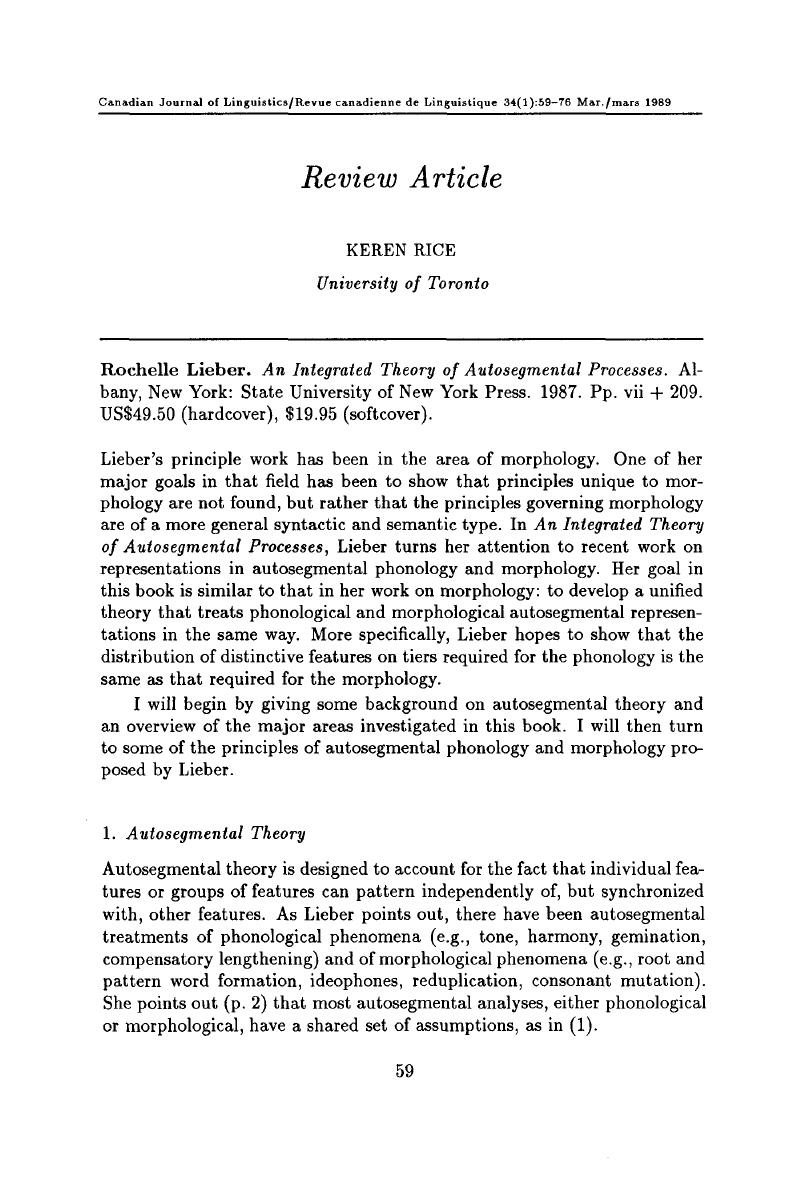No CrossRef data available.
Article contents
Rochelle Lieber. An Integrated Theory of Autosegmental Processes. Albany, New York: State University of New York Press. 1987. Pp. vii + 209. US$49.50 (hardcover), $19.95 (softcover).
Published online by Cambridge University Press: 28 July 2016
Abstract

- Type
- Book Review Articles
- Information
- Canadian Journal of Linguistics/Revue canadienne de linguistique , Volume 34 , Issue 1 , March 1989 , pp. 59 - 76
- Copyright
- Copyright © Canadian Linguistic Association. 1989
References
1 While Lieber argues this position in her book, in her more recent work (Lieber 1987), she proposes to do away with the Morphemic Tier Hypothesis by adopting a more current notion of feature geometry (e.g., Clements 1985, Sagey 1986, Steriade 1987).
2 Except perhaps in the case of opaque segments, as mentioned above.
3 See Avery and Rice (1988), Shaw (1988) for analyses of Chumash harmony as feature-adding rather than feature-changing.
4 All data is from Lieber, who takes her data from Zubizaretta (1979). Glosses are not provided by Zubizaretta. A cedilla indicates a lax vowel, an umlaut indicates fronting.
5 In Pasiego (Montagnes) Spanish, there is also a laxing phenomenon. The value [+lax] is supplied by a morpheme consisting of just this feature. Since there is some correlation between the presence of laxing harmony and the plural forms, it may be the case that [+lax] actually represents a morpheme in Andalusian Spanish as well.
6 Neither Lieber nor Zubizaretta give any words of the form e,o-á-V (e.g., vendára). Based on what Zubizaretta says, it appears that harmony would be blocked in a word like this. This is predicted since [a] has a dorsal node, thus making its structure visible to the rule.
7 I should note that there could be plane separation, in the sense of Prince (1987) and McCarthy (1989). According to McCarthy, planar segregation occurs when the elements are lexically unordered. Thus, the featural representations of consonants and vowels could be on different planes. This theory is compatible with the type of feature geometry discussed in this review.




